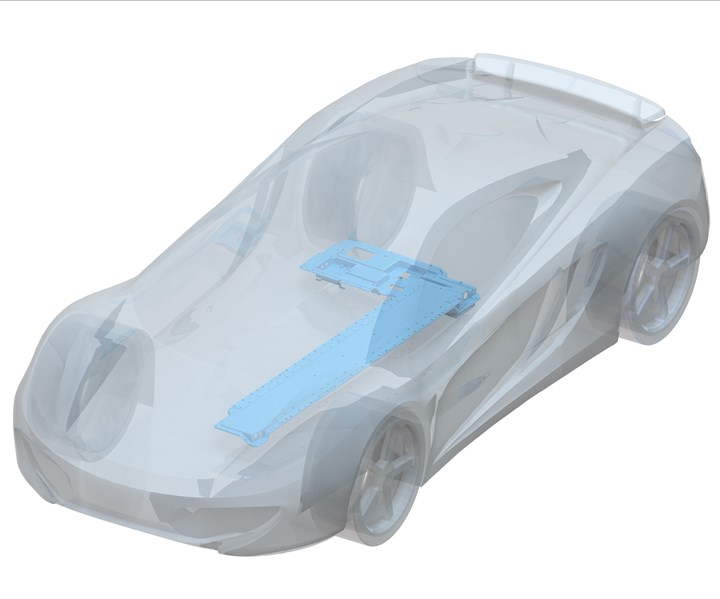CAMX 2019 exhibit preview: LyondellBasell
LyondellBasell is featuring its styrene-free materials that can be sourced in forms including SMCs, BMCs and engineered structural composites.

Source | LyondellBasell
At its first CAMX this year, LyondellBasell (Houston, Texas, U.S.) is featuring its enhanced compounding portfolio, which includes styrene-free materials that can be sourced in a variety of forms including sheet molding compounds (SMC), bulk molding compounds (BMC) and engineered structural composites. The materials reportedly deliver low out gassing, reduced volatile organic compound (VOC) emissions and low odor while being simple to process, reducing overall system costs. Other characteristics are said to include premium surface appearance for a high-end look and feel, and superior mechanical and thermal properties for high-demand automotive, electronics and construction applications.
Also on display will be an electric vehicle (EV) battery tray made of Premi-Glas 1203-28, a low-shrink, high-strength SMC. Premi-Glas 1203-28 is said to deliver design flexibility, high mechanical performance, and low weight, critical characteristics for the EV market. This material reportedly allows for 3D molding with fast throughput and can be compression molded
A global plastics, chemicals and refining company, LyondellBasell's compounding portfolio includes performance brands Quantum Composites, BMCI, Premix and Tetra-DUR. The company says its products and technologies address issues such as energy storage, production and efficiency, reducing carbon footprint and weight reduction for improved performance. From materials utilizing bio-based feedstocks and recycled content to applications that are focused on addressing today’s emerging trends, the company’s solutions focus on sustainability and improving quality of life.
Related Content
-
Bio-inspired EV underbody panel developed by TPI Composites, Helicoid Industries
Composite underbody panel for battery pack protection, made of stacked multiaxial noncrimp fabric, will serve high-volume commercial and automotive markets.
-
Composites end markets: Batteries and fuel cells (2024)
As the number of battery and fuel cell electric vehicles (EVs) grows, so do the opportunities for composites in battery enclosures and components for fuel cells.
-
Composites end markets: Automotive (2024)
Recent trends in automotive composites include new materials and developments for battery electric vehicles, hydrogen fuel cell technologies, and recycled and bio-based materials.

.jpg;width=70;height=70;mode=crop)









